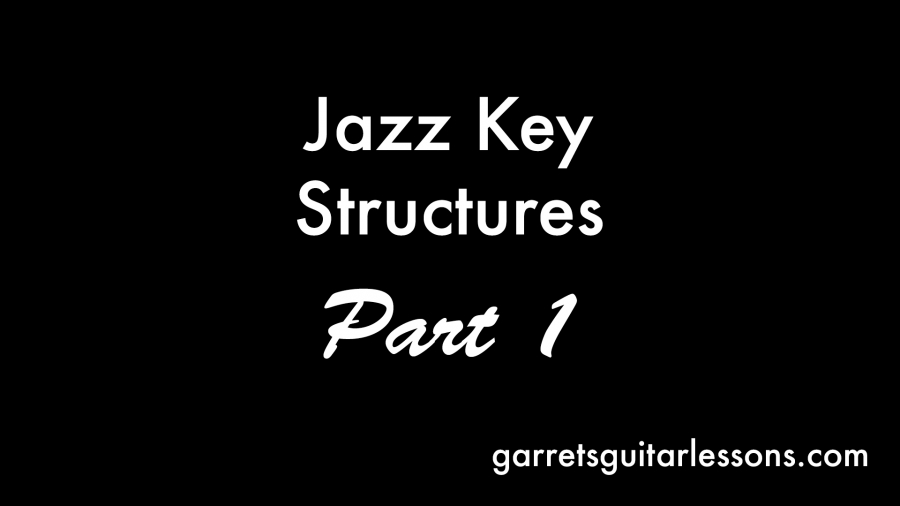Jazz is complicated due to the crazy Extended Chords and the fact that it changes keys all the time. This will be a series of blogs that will talk about how to spot keys and how to treat them in soloing and rhythm playing.
The ii-V-I
The ii-V-I is perhaps the most common of all jazz chord progressions and it typically signals the start of a new key. It quite literally is the ii chord (chord built on the 2nd degree of the scale), V chord (chord built on the 5th degree of the scale) and I chord (chord built on the 1st degree of the scale) or a given key. This is most commonly seen as a m7 – 7 – maj7 progression.
Transposing (Chords As Numbers)?! | UGT 5/8 | Barred 7th Chords
Now the way in which we see the chords are just as important as their chord type. Each of these chord movements happen in fourths. To put this is guitar terms we’ll be looking at each of these chord movements starting from two roots: the 6th String root and the 5th String root for the first ii (or m7 chord).
The 5th String Root
If we take the Key of C, we’ll notice the ii chord is a Dm (or Dm7) the V chord is a G7 and the I chord is a C (or Cmaj7). If the initial Dm7 happens on the 5th string, 5th fret, the V chord has to be back to frets (3rd Fret) up one string (6th String). This movement works anywhere on the fretboard. We’ll be able to spot a ii-V by if the m7 is found on the 5th string and the dominant 7 is found on the 6th string two frets back.
The V to I will also be found by a fourth, but since the V is on the 6th string, a fourth from there will be found on the same fret, on the fifth string. So our G7 is on the 3rd fret 6th string, our Cmaj7 is found on the 3rd fret 5th string. Likewise we’ll be able to spot a V-I by seeing a dominant 7 on the 6th string and the major 7th found on the 5th string, same fret.

The 6th String Root
Okay, there it is with the ii chord on the 5th string, but what if the ii chord is on the 6th string? Again we move in fourths. The concept is the same, but now we’re starting from another place. So if the ii chord is Dm, 10th fret 6th string, the V chord will be found on the same fret on the fifth string – G7: 10th fret 5th string. The V-I will be found starting at the V chord – 10th fret 5th string, back to frets (8th fret) up a string (6th string).

I’m giving you frets and string numbers to take away all the theory right away. Jazz changes tend to change quickly and so to be able to spot the ii-V-I’s without memorizing every key but rather recognize the movement can make things easier to digest, especially when beginning. Here are a few keys to start recognizing the pattern:
Em7 – A7 – Dmaj7
Bm7 – E7 – Amaj7
F#m7 – B7 – Emaj7
Ebm7 – Ab7 – Dbmaj7
Bbm7 – Eb7 – Abmaj7
Not every ii-V-I resolves to a I chord, sometimes you’ll see just a ii-V followed by another ii-V, you’d count those as ii-V’s even though we never reach the I. It’s a way to create movement and change keys without “committing” to that key.
To think about soloing over them, you must be able to play the chords themselves. Once that’s good, then you can at least know what scale to use, if you’re playing a ii-V-I the easiest way to start soloing is to play the I’s Major Scale! You’ll be hitting all the right notes. Now soloing is a bit more complicated than that, but that’s a good start right there. I’ll expand more as time goes on, but start recognizing those fourth movements and what keys you’re in!

